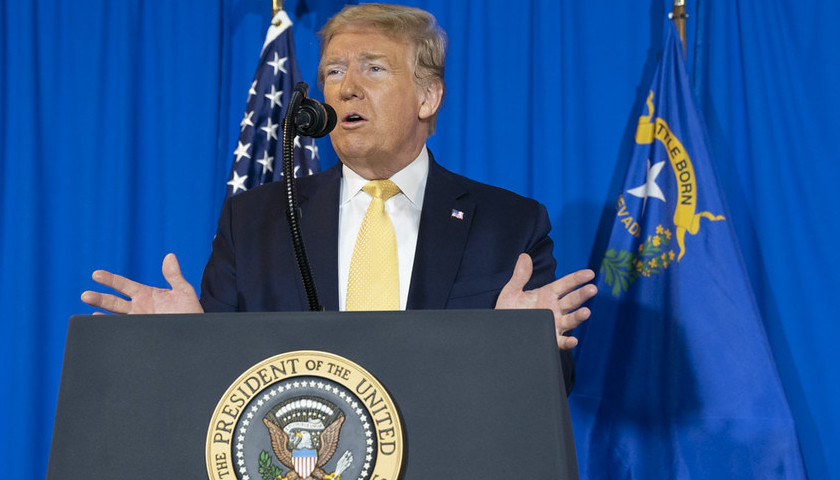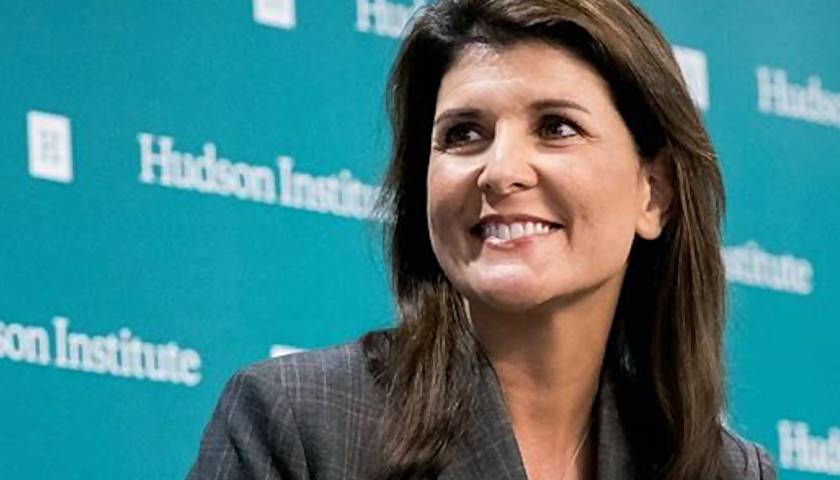by Bethany Blankley
Keeping with his promise in 2018 that he would be issuing a second round of tax cuts, President Donald Trump’s administration signaled that details of the new cuts would be announced in September.
The new plan calls for a 10 percent cut for middle-income taxpayers, according to a top White House official.
“In a meeting in the Oval, I guess two days ago, he looked at me and he said, ‘Let’s get it out by September,” National Economic Council Director Larry Kudlow told Fox Business Network. “We’d love to have a 10 percent middle-class tax cut, and we would love to strengthen and make permanent some of the other tax cuts.”
In early 2018, House Ways and Means Chairman Kevin Brady, R-Texas, said a middle class tax cut proposal would be unveiled in 2018. The proposal, and other legislative initiatives, were delayed because of impeachment proceedings. Brady suggested the plan would call for extending the slate of tax cuts for individuals set to expire by 2025.
In response to the proposed tax cuts, Michael Peterson, CEO of the Peterson G. Foundation, told The Center Square, “Our trillion-dollar deficits are already enormous and growing rapidly. If our leaders care about the economy for the next generation, they should manage our debt and improve our fiscal outlook instead of making the problem worse.”
Extending expiring components of the Tax Cuts and Jobs Act will only make the country’s financial problems worse, Peterson said, adding, “We couldn’t afford the $2 trillion in debt added by the original tax legislation. Extending provisions that add another $1.4 trillion will only make matters worse.”
Seven left-leaning think tanks proposed alternatives to cutting taxes to reduce the national debt in a 30-year budget plan published by the Peter G. Peterson Foundation’s Solutions Initiative 2019: Charting a Sustainable Future.
But proponents of the measure, like the Heritage Foundation, argue that by making the tax cuts permanent, “Congress could achieve an additional 60 percent of the economic benefit produced by [the 2017 TCJA] overhaul.”
The Tax Cuts and Jobs Act was the first action to overhaul the U.S. tax code in more than 30 years. It lowered taxes on individuals and businesses, permanently lowered the corporate tax rate from 35 to 21 percent, and temporarily allowed businesses to fully deduct new U.S. investments.
It reduced federal income tax rates, increased the standard deduction, doubled the child tax credit, repealed the personal and dependent exemptions, and capped the deductions for state and local taxes, among other reforms.
Since then, more than 1.2 million Americans moved up into the middle class economic bracket between 2016 and 2018, the U.S. Census Bureau reports. These individuals earned more than $50,000 in annual income during the period, with median household incomes rising by nearly 2.3 percent adjusting for inflation, the census report says.
Such an expansion of the middle class has not been seen since the 1960s.
American corporations brought back more than $1.04 trillion of overseas profits to the U.S. since Congress passed the TCJA. The bill overhauled the international tax system and encouraged U.S. companies to bring back offshore profits to the U.S.
The number fell short of the $4 trillion President Donald Trump projected when he pitched the 2017 tax law.
A continuing robust job market has also boosted U.S. consumer confidence to an all-time high in nearly two decades, according to data released by The Conference Board’s index.
Bloomberg News reports the data exceeded all estimates in its survey of economists, with the highest views on the current economic climate at their highest since November 2000.
The index “shows hiring and income gains are keeping consumers upbeat and assuaging concerns about the economy’s prospects in light of slowing global growth, volatile financial markets and escalating U.S.-China trade tensions,” Bloomberg reported.
January job growth numbers also indicate U.S. labor market will fuel economic growth in 2020. Nonfarm employers added 225,000 jobs in January, the U.S. Bureau of Labor Statistics reported], exceeding economists’ predictions.
– – –
Bethany Blankley is a contributor to The Center Square.




